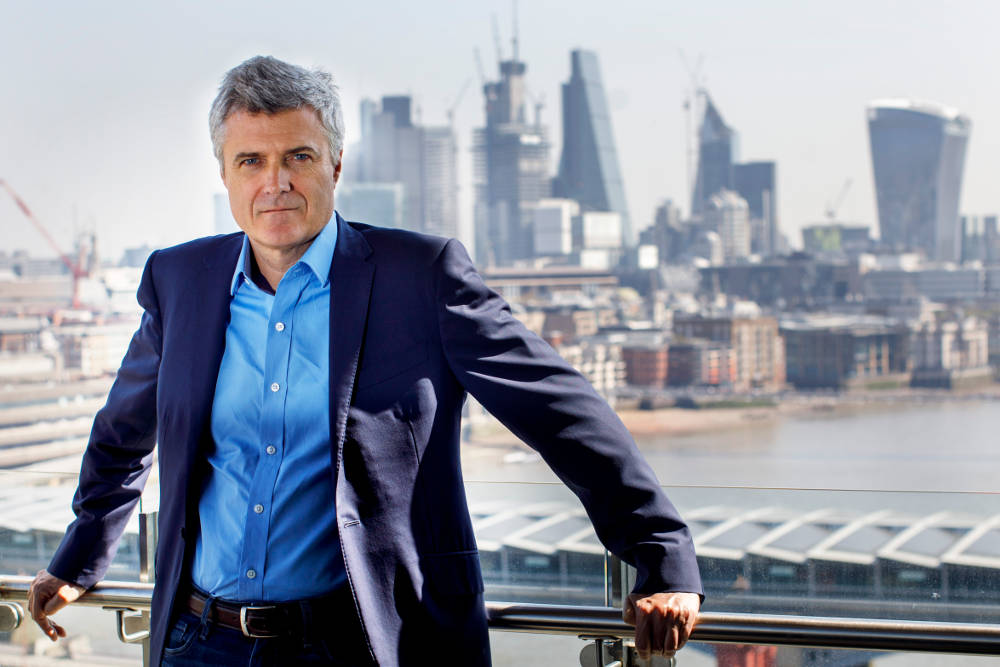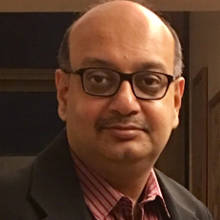[Mark Read, Chief Executive Officer, WPP. Photo from WPP.com]
Wunderman Thompson is the new game in town. The global merger between the world’s oldest agency, J Walter Thompson, and a relatively newbie, a digital network—both WPP companies—made headlines, even though the rumour mills had predicted the event for the past few months.
It wasn’t just the branding—placing the Wunderman brand ahead of JWT—but also the choice of the CEO (Mel Edwards, the global CEO of Wunderman) that made it clear what WPP CEO Mark Read had in mind. It also signalled an important shift in the world of marketing communications and services.
The merger raises several questions. At one level, putting creative, strategic, technological and data capabilities together into a composite bundle isn’t rocket science. In the new world, that makes eminent sense. But the eternal question is whether clients are willing to throw in not just the slices of the pizza, but the whole thing. Dislodging existing relationships or indeed persuading clients to consolidate their spending in a one-stop shop is a leap of faith that’s not always realistic.
At WPP, founder and former CEO Martin Sorrell spent much of his long career trying to do exactly that, hoping that buying up a string of storied brands in the communications space—JWT, Ogilvy, Grey, Y&R—would allow him to maintain a lock over the biggest spenders, but also hoard the best talent.
Creating the largest advertising and marketing corporation in history also posed a serious set of challenges for Sorrell. In March this year, Sorrell first floated the idea of a possible merger between JWT and Grey, sparking fears of a massive clash of cultures between two proud creative-led agencies. (Much to the consternation of some of his business leaders, Sorrell put in place strict no-poaching pacts to ensure that his own agencies did not make a beeline for each other’s talent.)
Sorrell even went a long distance to drive his customer-centric approach, building exclusive global hubs to manage important client business. One of the most important wins was pulling off a Team Detroit inside WPP, where he could service the Ford business, its largest global client, by drawing upon the best talent from all his agencies across the world. Similar arrangements were fashioned for Unilever, P&G, J&J, Kimberly Clark and a few others, though not often with the same degree of success.
However, in early October this year, weeks before the JWT-Wunderman merger, WPP saw a significant part of the Ford business slip away. It is no longer the creative agency on record, losing out to Omnicom’s BBDO with Wieden+Kennedy stepping in to work on Ford’s special innovation projects. WPP will continue to handle activation and media and some other bits of business. It will now need to scramble to find work for the 3,000-odd people who were part of the bespoke agency that was created to service the Ford account. There’s talk that it has thrown its hat in the ring for the Volkswagen business.
From his perch on the board of WPP, before taking over as CEO, Mark Read must have seen the writing on the wall.
At one end, the marketing services industry was becoming more and more specialised. And two, new players were coming to the party, many with erstwhile ad backgrounds. Shopper marketing, event management, sales promotions, loyalty and customer relationship management, content management—the sheer explosion in choice made the task of integration a challenge not just for the clients but also for the full-service agencies. A former senior executive at JWT remembers being part of an integration day at Unilever for one of its brands in the US. The tricky part invariably for the marketer was to evolve a common look for the brand, based on creative work presented by multiple creative partners, often running the risk of trampling on fragile egos.
In many cases, Sorrell again relied on strategic acquisitions to build new capabilities, since the mothership, immersed in its own advertising-led model, wasn’t always nimble enough to create a flotilla on its own.
In the last five years, the ensuing digital disruption created its own set of challenges, perhaps the most formidable ever in WPP’s history. For one, Facebook and Google had access to customer data that was granular and personalised, which WPP’s research or its media agencies simply did not have. Clients saw great value in this because it allowed them to precisely target customer groups in ways that they could never have done earlier. Within no time, digital spends in the US overtook TV and print, and stand at almost 40% today. Between Facebook and Google, they controlled the sweepstakes. And worryingly, many clients such as Vodafone were open to the idea of dealing directly with the social media giants, cutting out any middlemen from the picture. Even consultancies such as Accenture and Deloitte are increasingly muscling into the marketing services space with end-to-end tech-led solutions. So, while ad agencies obsessed about winning campaigns, Accenture’s client proposition to a car maker would be to help reshape the entire buying experience.
Markets such as India may still lag behind the US. But it is a matter of time before the same scenario plays itself out in India too. But keeping the teams here future ready is a challenge that is nothing short of herculean because people get so deeply embedded in the ingrained culture and ways of working that it is hard for them to shift gears and remain agile.
The most important question: How do you define the new Holy Grail? For long, traditional ad agencies prided themselves on their ability to bring the voice of the customer into the business. But soon, the clients realised that they need to take charge of that agenda themselves. Listening posts, immersions, serving up customer voice packets to leaders every morning drove this change process inside firms. Design thinkers and innovation specialists worked hard to build greater empathy among clients. The world of Big Data has helped firms deal with understanding customer needs and shifts.
So now how could the agency differentiate its offering beyond just slickly produced creative ad campaigns?
Falling margins are an obvious result of losing the position of primacy with clients. As fragmentation in marketing services became more and more pronounced, clients were ever-ready to shop around for better and cheaper services.
All isn’t lost though. There is still an opportunity for the likes of Wunderman Thompson to evolve a new code. By itself data isn’t enough of a differentiator—and cannot fully solve a critical challenge. There is an opportunity to marry the world of data analytics and the new tools of behavioural sciences. Clients are willing to pay heed to a new science that brings the world of data and insights together.
Two recent business best-sellers provide an insight on how this might play out. One is called Sensemaking: What Makes Human Intelligence Essential in the Age of the Algorithm. Author Christian Madsbjerg argues that many of today’s biggest success stories stem not from “quant” thinking, but rather from a company’s deep, nuanced engagement with the culture, language and history of its customers.
Second, The Fuzzy and the Techie: Why the Liberal Arts Will Rule the Digital World, also published last year. It punctures one of the biggest myths in the world of business: that techies provide the leadership to innovation. Author Scott Hartley shows it is actually the fuzzies—and not the techies—who end up coming up with the most impactful business ideas. Because they have the empathy to understand people, and their most critical pain points and what it might take to solve them.
Hartley shows with real life examples the power of collaborations between the fuzzy and the techie—and how that lies at the centre of today’s innovation agenda. And also, why liberal arts is fast re-emerging as a force to reckon with in this tech-driven world.
There are a few small tell-tale signs that this new world of fuzzy-techie jugalbandi may be upon us. Earlier this year, Fractal Analytics acquired Final Mile, which calls itself behavioural architects. Final Mile was founded by Biju Dominic, a former JWT professional in India and focused on solving complex challenges facing businesses and even social enterprises using Richard Thaler’s nudge theory. Much of the demand is centred in the US. But it may not be long before global clients in India start asking for such marriages. But can Wunderman Thompson refashion itself in the new world? Or will it be a bridge too far?
(A shorter version of this column was first published in Business Standard)

